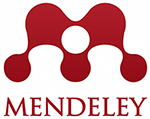Autopsia oral: un análisis bibliométrico
DOI:
https://doi.org/10.26871/killcanasalud.v6i3.1006Palabras clave:
Autopsia oral, odontología forense, tendencias, producción, bibliométricoResumen
La odontología forense cumple un rol imprescindible en el entorno judicial al contribuir a la detección y aclaración de los delitos, donde, el odontólogo examina la evidencia bucodental a profundidad aplicando técnicas de ciencia forense, siendo la autopsia oral un medio para aclarar una muerte si no se dispone de datos concluyentes. El objetivo del documento es identificar las tendencias de la investigación sobre autopsia oral en Web of Science. Se realizó un estudio observacional, descriptivo, retrospectivo mediante el análisis bibliométrico , recurriendo a la base de datos Web of Science para recuperar la producción científica mundial sobre autopsia oral. Los resultados permiten conocer los indicadores bibliométricos de producción, visibilidad, impacto y colaboración para evaluar la participación global en la investigación sobre la temática. Concluyendo que el análisis de 38 documentos evidenció un crecimiento exponencial de la producción científica entre 2001 y 2021, un liderazgo de las universidades en generación de conocimiento sobre autopsia oral con aportes en revistas de alta visibilidad, especialmente en Brasil e Italia, y la escasez de artículos evidencia la necesidad de incrementar y fortalecer las investigaciones en el área de odontología forenseDescargas
Citas
Fonseca GM, Briem-Stamm AD, Cantín M, Lucena J, Bentkovski A. Odontología Forense I: Las Huellas de Mordedura Forensic Dentistry I: Bite Marks. Vol. 7, Int. J. Odontostomat. 2013.
Moreno F, Moreno S, Marín L. Identificación Odontológica Forense: Revisión De La Literatura Y Reporte De Un Caso. Ustasalud Odontol [Internet]. 2007;6(1):60–6. Disponible en: http://revistas.ustabuca.edu.co/index.php/USTASALUD_ODONTOLOGIA/article/view/1815/1392
Bel Blesa A. La odontología forense en las Fuerzas Armadas: Una asignatura pendiente. Sanid Mil. 2011;67(4):375–80.
Núñez MM, Velásquez E, Dary L, Rodríguez Z, Carlos J. Dossier temático: Odontología legal y forense. Univ Odontológica. 2016;35(74):1–3.
Pittayapat P, Thevissen P, Fieuws S, Jacobs R, Willems G. Forensic oral imaging quality of hand-held dental X-ray devices: Comparison of two image receptors and two devices. FORENSIC Sci Int. 2010;194(1–3):20–7.
Nuzzolese E. VIRDENTOPSY: Virtual Dental Autopsy and Remote Forensic Odontology Evaluation. Dent J. 2021;9(9).
van Eck NJ, Waltman L. Software survey: VOSviewer, a computer program for bibliometric mapping. Scientometrics [Internet]. el 31 de diciembre de 2010 [citado el 13 de enero de 2021];84(2):523–38. Disponible en: www.cs.sandia.gov/*smartin/software.html
Guzzi G, Grandi M, Cattaneo C, Calza S, Minoia C, Ronchi A, et al. Dental amalgam and mercury levels in autopsy tissues - Food for thought. Am J Forensic Med Pathol. 2006;27(1):42–5.
Bassed RB, Briggs C, Drummer OH. Age Estimation and the Developing Third Molar Tooth: An Analysis of an Australian Population Using Computed Tomography. J Forensic Sci. 2011;56(5):1185–91.
Franco A, Thevissen P, Coudyzer W, Develter W, Van de Voorde W, Oyen R, et al. Feasibility and validation of virtual autopsy for dental identification using the Interpol dental codes. J Forensic Leg Med. 2013;20(4):248–54.
Sakuma A, Saitoh H, Suzuki Y, Makino Y, Inokuchi G, Hayakawa M, et al. Age Estimation Based on Pulp Cavity to Tooth Volume Ratio Using Postmortem Computed Tomography Images. J Forensic Sci. 2013;58(6):1531–5.
Bassed RB, Hill AJ. The use of computed tomography (CT) to estimate age in the 2009 Victorian Bushfire Victims: A case report. FORENSIC Sci Int. 2011;205(1–3):48–51.
Santoro V, Smaldone G, Lozito P, Smaldone M, Introna F. A forensic approach to fatal dog attacks. A case study and review of the literature. FORENSIC Sci Int. 2011;206(1–3):E37–42.
Kvaal SI. Collection of post mortem data: DVI protocols and quality assurance. FORENSIC Sci Int. 2006;159(International IOFOS Symposium on Forensic Odontology/3rd International Conferenc on Reconstruction of Soft Facial Parts):S12–4.
Dumancic J, Kaic Z, Njemirovskij V, Brkic H, Zecevic D. Dental identification after two mass disasters in Croatia. Croat Med J [Internet]. 2001;42(10th International Symposium on Comparative Pathology):657-662 WE-Conference Proceedings Citation Index. Disponible en: http://www.cmj.hr/2001/42/6/11740850.pdf
Vavpotic M, Turk T, Martincic DS, Balazic J. Characteristics of the number of odontoblasts in human dental pulp post-mortem. FORENSIC Sci Int. 2009;193(1–3):122–6.
Gregorio-Chaviano O, Limaymanta CH, López-Mesa EK. Análisis bibliométrico de la producción científica latinoamericana sobre COVID-19. Biomedica [Internet]. el 30 de octubre de 2020 [citado el 13 de abril de 2021];40(2):104–15. Disponible en: https://doi.org/10.7705/biomedica.5571
Da Silva S, Perlin M, Matsushita R, Santos AAP, Imasato T, Borenstein D. Lotka’s law for the Brazilian scientific output published in journals. J Inf Sci. 2019;45(5):705–9.
Ramírez-Velásquez M, Medina-Sotomayor P, Morocho-Macas ÁA. Enfermedad por coronavirus 2019 (COVID-19) y su repercusión en la consulta odontológica: una revisión. Odontol Sanmarquina. 2020;23(2):139–46.
Putrino A, Bruti V, Enrico M, Costantino C, Ersilia B, Gabriella G. Intraoral Scanners in Personal Identification of Corpses: Usefulness and Reliability of 3D Technologies in Modern Forensic Dentistry. Open Dent J. 2020;14:255–66.
Zhang M. Forensic imaging: a powerful tool in modern forensic investigation. FORENSIC Sci Res.
Araujo-Cuauro JC. Oral necropsy its importance and insertion in the forensic medical protocol of the corpse within the field of forensic dentistry. ACTA BIOCLINICA. 2021;11(22):94-113 WE-Emerging Sources Citation Index (ESCI).










